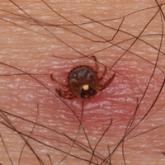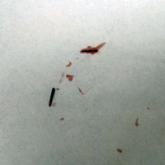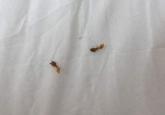Environmental Dermatology

What’s Eating You? Lone Star Tick (Amblyomma americanum)
Amblyomma americanum, also known as the lone star tick, is found in much of the eastern United States. Since the mid-20th century, the lone star...
Dr. Reynolds is from Naval Air Station Pensacola, Florida. Dr. Elston is from the Department of Dermatology and Dermatologic Surgery, Medical University of South Carolina, Charleston.
The authors report no conflict of interest.
The views expressed are those of the authors and are not to be construed as official or as representing those of the US Navy or the Department of Defense. The authors were full-time federal employees at the time portions of this work were completed. The images are in the public domain.
Correspondence: H. Harris Reynolds, MD, Aviation Medicine, Training Air Wing SIX, Naval Air Station Pensacola, 390 San Carlos Rd, Ste C, Pensacola, FL 32508 (hoyt.reynolds@navy.mil).

Cheyletiella are nonburrowing mites commonly found on rabbits, dogs, and cats. The mites have been known to cause disease in humans, ranging from mild dermatitis to more severe illness with systemic symptoms. Because these mites do not complete any part of their life cycle in humans, diagnosis can be challenging. Herein, we review various clinical presentations associated with Cheyletiella mites as well as diagnostic techniques and treatment options for both humans and animals.
Practice Points
Cheyletiella are nonburrowing mites characterized by hooklike anterior palps (Figure 1) that have a worldwide distribution. Human dermatitis is the result of contact with an affected animal and may present as papular or bullous lesions. Cheyletiella blakei affects cats, Cheyletiella parasitovorax is found on rabbits, and Cheyletiella yasguri is found on dogs. The mites live in the outer layer of the epidermis of the host animal and feed on surface debris and tissue fluids.1 They complete an entire 35-day life cycle on a single animal host. The larval, nymph, and adult male mites die within 48 hours of separation from a host. The female mite and possibly the eggs can live up to 10 days off the host, which makes environmental decontamination a critical part of pest control.2 In animals, the mite often produces a subtle dermatitis sometimes called walking dandruff (Figure 2).3 Affected animals also can be asymptomatic, and up to 50% of rabbits in commercial colonies may harbor Cheyletiella or other mites.4
The typical human patient with Cheyletiella-associated dermatitis is a female 40 years or younger who presents with grouped pruritic papules.5 Although papules usually are grouped on exposed areas, they also may be widespread.6,7 Bullous eruptions caused by Cheyletiella mites may mimic those found in immunobullous diseases (Figure 3).8 Children may experience widespread dermatitis after taking a nap where a dog has slept.9 Pet owners, farmers, and veterinarians frequently present with zoonotic mite-induced dermatitis.10 Arthralgia and peripheral eosinophilia caused by Cheyletiella infestation also has been reported.11
In a case of human infestation resulting from an affected pet, the implicated pet should be evaluated by a qualified veterinarian. Various diagnostic techniques for animals have been used, including adhesive tape preparations.12 A rapid knockdown insecticidal spray marketed for use on animals has been used to facilitate collection of mites, but some pets may be susceptible to toxicity from insecticides. The scaly area should be carefully brushed with a toothbrush or fine-tooth comb, and all scales, crust, and hair collected should be placed in a resealable plastic storage bag. When alcohol is added to the bag, most contents will sink, but the mites tend to float. Vacuum cleaners fitted with in-line filters also have been used to collect mites. The filter samples can be treated with hot potassium hydroxide, then floated in a concentrated sugar solution to collect the ectoparasites.13 Often, a straightforward approach using a #10 blade to provide a skin scraping from the animal in question is effective.14
Various treatment modalities may be employed by the veterinarian, including dips or shampoos, as well as fipronil.15,16 A single application of fipronil 10% has been shown to be highly effective in the elimination of mites after a single application in cats.17 Oral ivermectin and topical amitraz also have been used.18,19 A veterinarian should treat the animals, as some are more susceptible to toxicity from topical or systemic agents.
Cheyletiella infestations in humans usually are self-limited and resolve within a few weeks after treatment of the source animal. Symptomatic treatment with antipruritic medications and topical steroids may be of use while awaiting resolution. Identification and treatment of the vector is key to eliminating the infestation and preventing recurrence.

Amblyomma americanum, also known as the lone star tick, is found in much of the eastern United States. Since the mid-20th century, the lone star...

Injuries from sea urchin spines are commonly seen in coastal regions with high levels of participation in water activities. Although these...

Ant-induced alopecia is a rare cause of acute, localized, nonscarring hair loss. It is most commonly caused by Pheidole ants.
